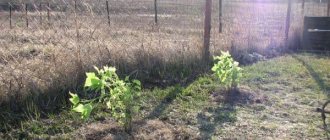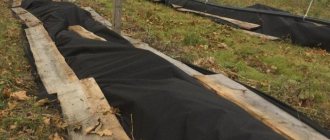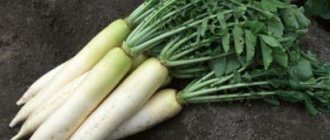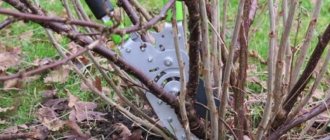The hilling process is known to all summer residents and people who spend a lot of time tending crops.
Hilling helps improve the quality of the crop and get rid of weeds. What is the benefit of such a process? Let's try to figure out what it is and why it is needed.
Hilling is a method of cultivating land for the purpose of improving it. As a rule, it is customary to hill up potatoes, but it is also useful to hill up other vegetables and crops.
What crops can be cultivated?
- Potato
- cucumbers
- Tomatoes
- Cabbage
- Carrot
- Flower crops
- Early seedlings
In some plants, hilling helps to form adventitious roots, which improves nutritional properties.
It is best to carry out the process after rain, when the soil is saturated with moisture. If the soil is dry, it is better to water it before hilling; dry soil will only worsen the plant.
Hilling up is best done using a special tool, so the soil will be loosened. By raking the soil towards the plant stem, you can remove weeds at the same time.
So is it worth doing?
Should I do it or not? There are several reasons why potatoes are hilled:
Hilling protects potato shoots from late frosts. This event is very relevant in climate zones where weather conditions are unstable. Hills of soil around young stems provide them with a warm shelter. Vulnerable shoots are protected from sudden frosts, and can calmly grow and develop even in harsh weather conditions.
- High earthen mounds surrounding the potatoes protect fragile plant stems from strong winds and prevent them from breaking or bending.
- Hilling improves the structure of the soil, making it looser and more breathable. This is very useful and necessary when growing potatoes on dense and moist soil.
- Potatoes need sufficient moisture. Hilling allows water to penetrate more quickly to the underground parts of the plant.
- This procedure actively fights weeds that interfere with the proper growth and nutrition of potato bushes.
- Shallow planting and regular hilling of potatoes makes the harvesting procedure easier, since the tubers are grown almost on the surface of the ground.
- Hilled beds are easier to treat with products against harmful insects, such as the Colorado potato beetle.
- Hilled potato plantings are easier to process with various agricultural cultivators.
Let's consider what methods you can use to hill up potatoes, which tool to choose, and what are the features of hilling with a walk-behind tractor.
Hilling up potatoes
Potatoes are hilled only 2-3 times. First, it is carried out when the stems reach a length of up to 20 cm, forming beds with a special hoe.
It is important to remember that it is necessary to hill up potatoes when the soil is moist, this way you will preserve the structure of the plants and create conditions for a larger harvest.
The second time you can hill up after 2 weeks, and the next time after a month.
Important! Hilling potatoes when they are blooming will have a bad effect on yield.
When hilling potatoes, you can use nutrients along with the soil (humus, sawdust, compost). They help preserve plants in bad weather and supply them with essential nutrients.
Arguments in favor of hilling
The formation of ridges increases the labor intensity of the process of growing potatoes - agricultural technology also involves pest control, watering and weeding. But this useful procedure cannot be ignored. Hilling has undeniable advantages. The first of them is increasing productivity and strengthening plants in the soil due to the formation of underground shoots (stolons) and near-stem roots.
Loose soil protects the stems from temperature changes, both downward and upward, and prevents the soil from quickly drying out. In such an environment, optimal air exchange occurs, nothing interferes with the penetration of moisture, which also has a positive effect on the growth and development of bushes.
The formation of an additional layer of loose soil slows down the growth of weeds - their roots are damaged, and it becomes difficult for the weeds to break through to the light. Neutralization of “competitors” allows the potatoes to receive more nutrients and reduces the need for weeding.
Related article:
The best fertilizers for potatoes
Thanks to hilling, potato bushes do not grow or fall apart - this allows rational use of the usable area. It is possible to place 10-15% more plants on the site than if the formation of an earthen ridge is completely abandoned.
This technique allows you to reduce the risk of developing diseases, such as blackleg. This reduces the percentage of crop spoilage in the ground and when stored in the cellar. Thanks to loosening the soil, it is also possible to cope with some pests.
Important to know: How to get rid of mole crickets in the garden
The most important argument in favor of forming ridges is to protect the tubers from sunlight. Under the influence of ultraviolet radiation, a toxic organic compound is formed in them - solanine. The production of this substance provides plants with protection from pests and diseases. It has a toxic effect on the human body (if consumed in significant quantities).
Related article:
How to grow potatoes from seeds in one season
Tomatoes
Tomatoes can be hilled 3-5 times per season. This process will help the plants to secure the base at the roots, since their base is quite weak during the ripening process. After each hilling, you can add 5-10 cm of soil.
The first hilling of tomatoes can be done after 3 weeks after planting. During this period, the roots of the plant already have time to grow quite firmly. Afterwards you can repeat it once every 1.5 months.
The benefits and harms of the procedure
This agrotechnical procedure is necessary for many plants, and primarily for those that form appendage roots during development. However, not all gardeners are confident in the exceptional benefits of this technique. They argue with the following arguments:
- Water evaporates faster from loose soil, this technique contributes to this;
- overheating of loosened soil can lead to the growth of tubers stopping and their death.
However, the counterarguments of supporters of this agricultural technique are perhaps more convincing:
- after hilling, the growth of tops, roots and aerial roots accelerates;
- additional shoots are formed;
- weeds are removed;
- the soil becomes loose and airy;
- the stem becomes more stable;
- soil “featherbed” allows crops to develop better.
Both opinions have a right to exist. It is worth using this technique taking into account all its advantages and disadvantages, and exclude it when caring for some garden crops.
Lovers of loose feather bed
Potato agricultural technology strongly recommends including repeated hilling in the list of necessary activities. This stimulates the formation of additional tubers. The soil is added to the stems as soon as mass shoots appear. This is a guarantee that weak sprouts will withstand return frosts. The procedure is repeated before flowering begins. It is then useful to repeat this procedure every 10 days.
READ ALSO: Abakan pink tomatoes
White cabbage also needs this kind of care. Early varieties spud once - when the tenth leaf appears. Cabbage of medium and late varieties responds gratefully to loose “featherbed,” which is raked two to three times at intervals of half a month.
It is also necessary to loosen cauliflower; this procedure must be repeated every two weeks.
The most valuable part of a leek is the bleached part of the stem. It is to increase it that high hilling of the plant is necessary. In the same way, they stimulate the regrowth of asparagus stems.
In rainy summer conditions, tomatoes need this method of care. It can be produced a month after planting in a permanent place.
The bare tops of carrots are also covered with soil to prevent them from turning green and the appearance of carrot flies.
Necessary caution
Not all plants benefit from this agricultural technique. Particular care should be taken when hilling the following crops:
- pepper;
- cucumbers;
- zucchini;
- pumpkins;
- beans;
- peas.
The root system of these plants is located near the surface of the soil, so careless actions can damage it, which will certainly affect the future harvest.
The soil near the stems can be slightly loosened when several true leaves appear, and then hilling is best replaced by mulching with straw or compost.
Complete ban
Hilling is strictly contraindicated for several garden crops, such as dill, lettuce, and parsley. In this process, soil gets onto the stems and leaves of plants, and for this reason, rotting can begin. Even after watering or rain, it is recommended to mulch the beds with this greenery with non-woven material, sawdust or straw.
Onions and celery are also on the list of plants that can be destroyed by hilling. Moreover, in order for the root crops to form normally, they are uncultivated a month before harvesting, that is, the soil is raked away from them. At the same time, for better ripening, part of the roots is slightly shortened.
Cabbage
The first hilling of cabbage sprouts can be done after 10-12 days after planting in the ground. The second time the process is carried out after 1 month. By this time, the plant has already become stronger and is ready to strengthen the base.
When hilling, you can use a hiller, a frequently used tool among gardeners. The soil around the seedling must be loosened, after which it must be moved to the base of the root.
It is necessary to hill up cabbage in calm, quiet weather, so that the loosened soil does not spread over the entire area.
Work time
You cannot start work after 10-11 o'clock in the afternoon, the only exception being cloudy weather. When hilling in the heat, the plants will experience stress, which leads to their loss of turgor - hot soil increases the evaporation of moisture and burns the stems. You can start work in the morning (before 10-11) or in the evening (after 16 o'clock). The period after rain is favorable - the moist soil holds well, does not crumble, transfers additional moisture to the plants, which stimulates the formation of underground stolons - it is on them that tubers are formed.
Related article:
How to grow potatoes in bags: 3 interesting ways











